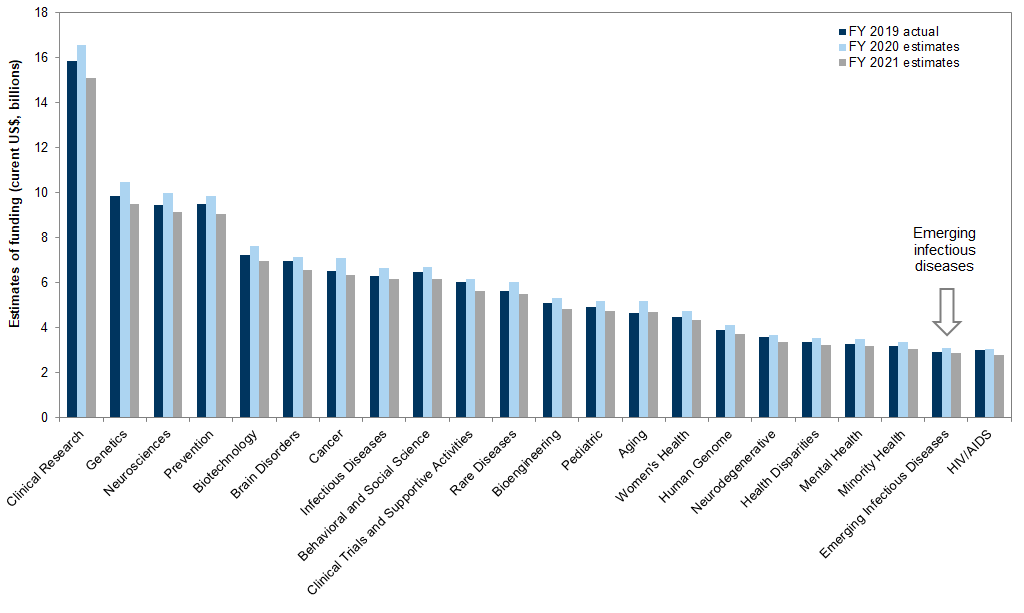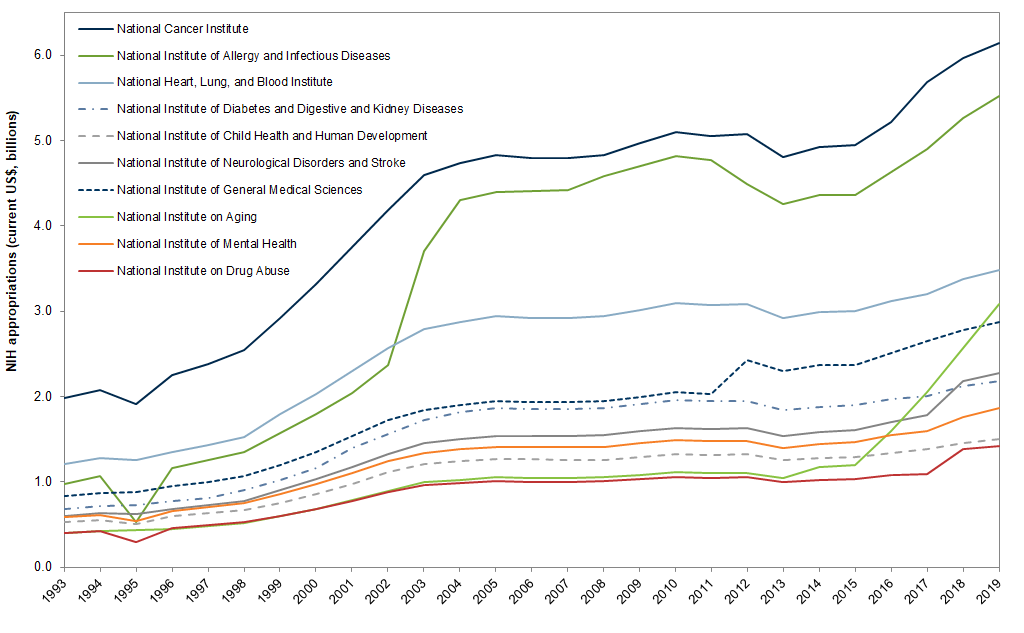- Published on
Notes on the NIH
NIH's origins were in the national hygiene lab, minimally staffed.
Initial budget was $150M for 5 years, inflation adjusted. The initial proposal was originally developed between a Louisiana senator and They got haggled down to ~$10M, since it was the great depression in 1930. Herbert Hoover was a strong supporter. The hygene lab was initially not on board. they wanted to be a small but independent org, and had been fighting for a long time to avoid being swallowed into a bigger bureau. Ultimately, the hygene lab went along in exchange for some pork in the form of larger salaries to research scientists.
Of the proposed budget, $5M was to be spent on a new lab, and $2M per year of a 5 year period was meant to construt a new and enlarged lab. this doesn't make sense. Original proposal was to have it under jurisdiction of the US public health service, controlled by surgeon general. would be authorized to accept dnations of up to $500k.
The initial NIH was a product of timing it came in off the heels of the 1928 flu pandemic, and pitched some preliminary exciting results in cell culture that proved useful. Originally it was very much focused on solving the government's public health problems. E.g. ~40% of draftees couldn't be soldiers, and the #1 cause was tooth problems. So the NIH was created in 1930 and one of the first projects in 1931 was developing a strategy to fluorinate the drinking water.
The initial seed of the NIH as today's umbrella mega-org came in 1937 when the senate unanimously cosponsored created the National Cancer Institute. This new cancer mandate was promptly superceded. WW2 shortly followed and became a main preoccupation occupational exposures to lead & explosives, tropical diseases, and venereal disease.
In the post-war world, NCI was formally put under control of the NIH, and in the late 1940's the NIH pluralized it's name to the National Institutes of Health, and key changes started to happen:
- Divisions were named after diseases, not scientific disciplines: the 'National Microbiological Institute' became 'National Institute of Allergy and Infectious Diseases.' Naming divisions after specific problems and diseases made them easier to get funded.
- Distinct divisions gradually proliferated, from 4 groups in 1949, to 10 by 1960, to 15 by 1970, to 27 in 1998.
The big bump for the NIH budget doubled in 1998-2003, and then has been flat since then. This rocked biomedical research in ways good and bad that are still being felt today.
Relevant graphs:




federal gov spends a ton on life sciences in particular.